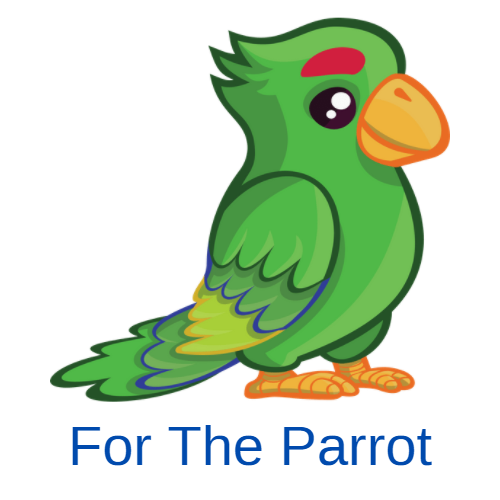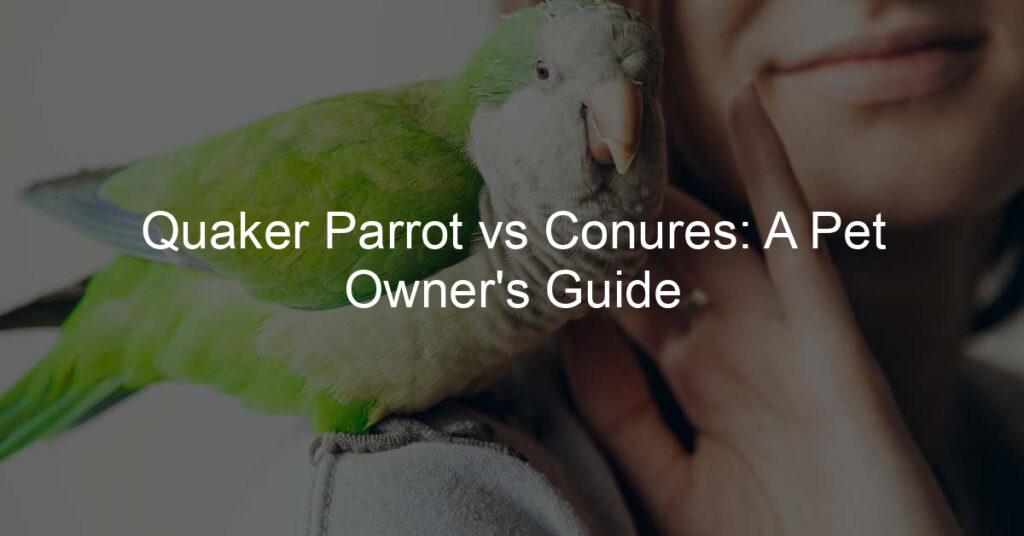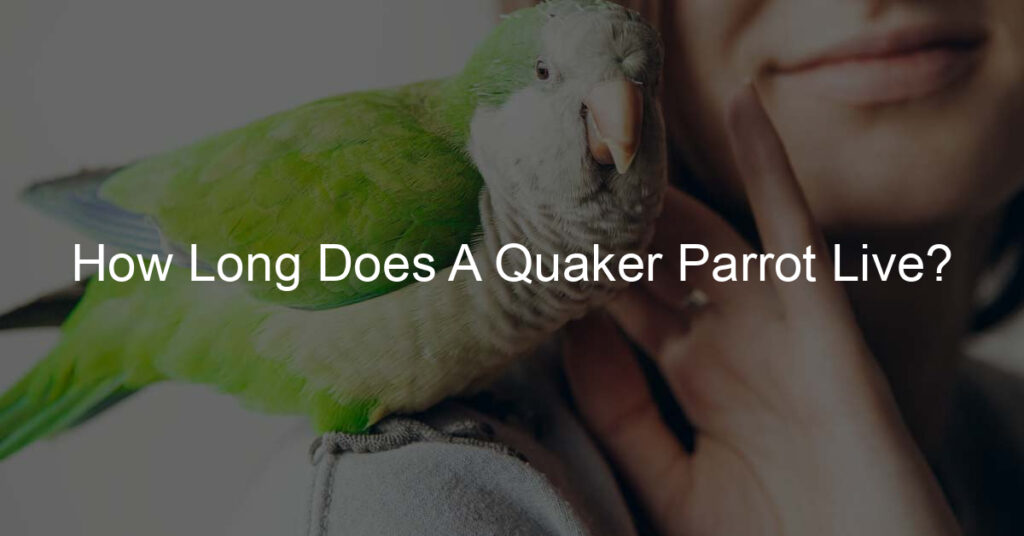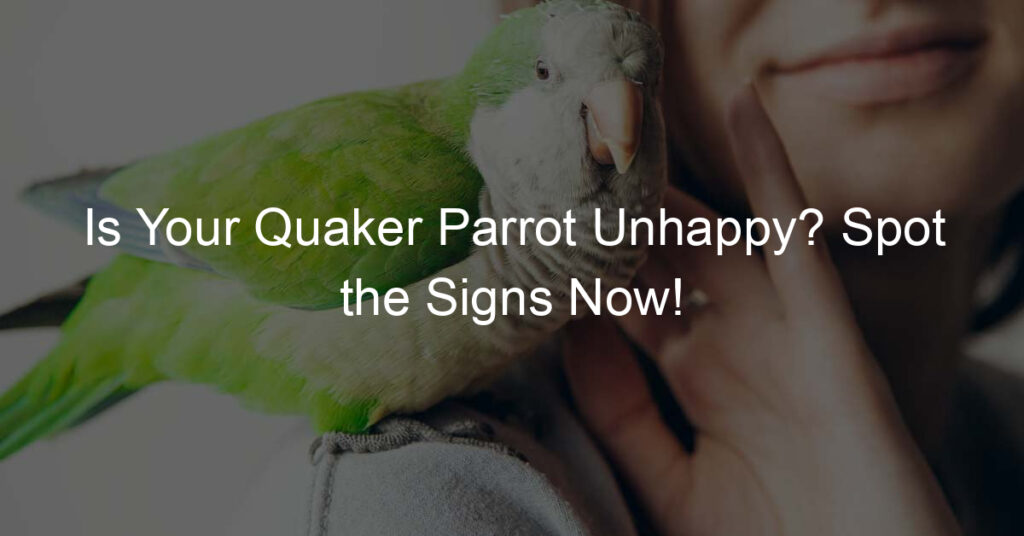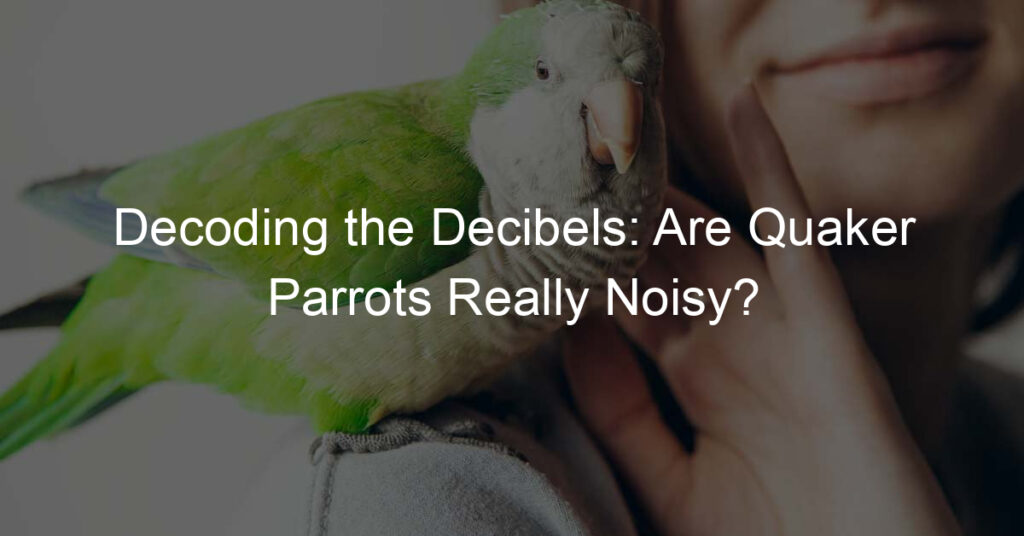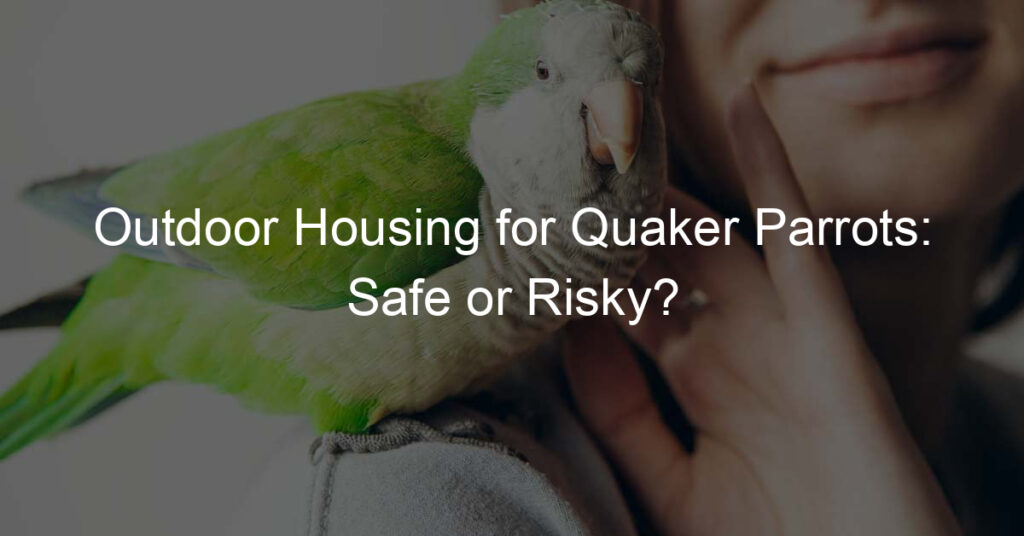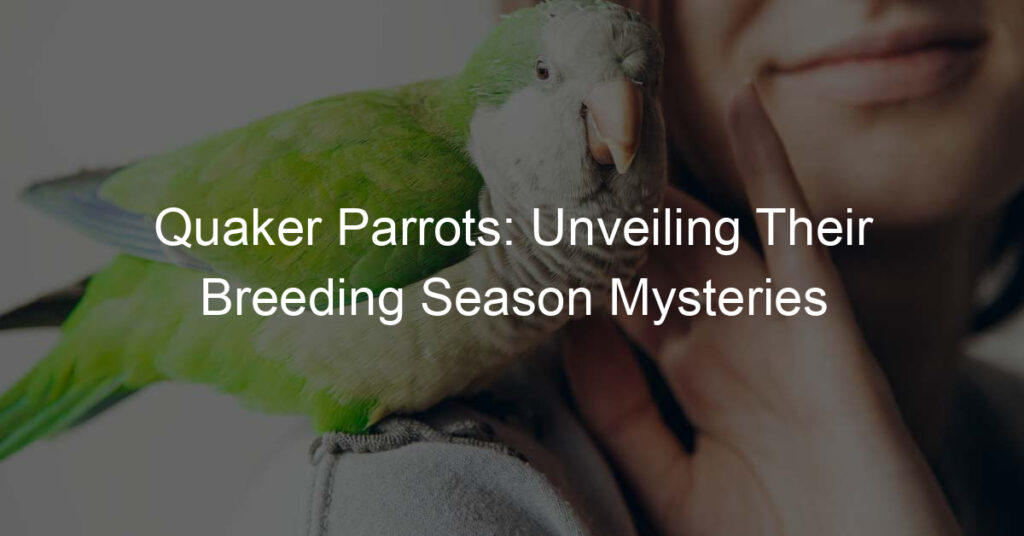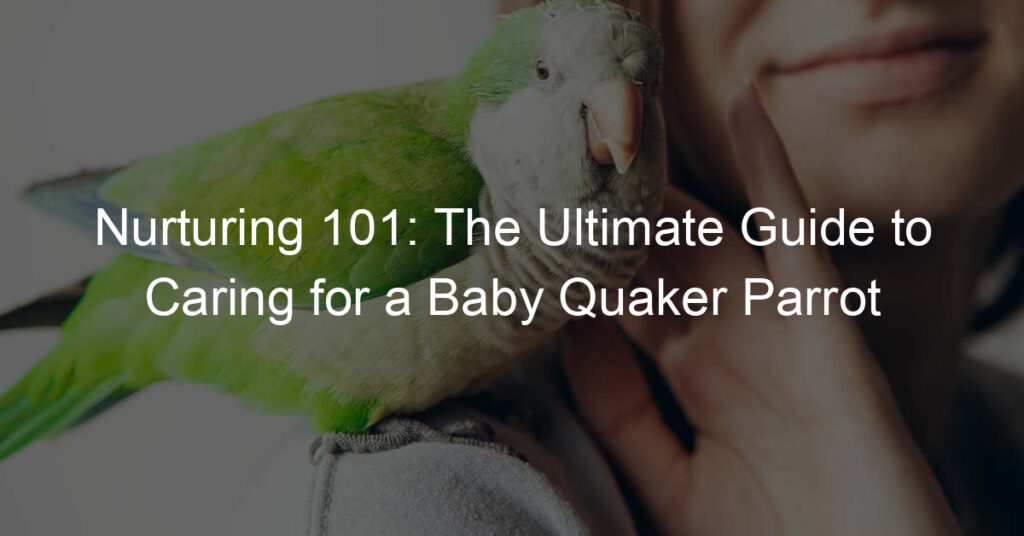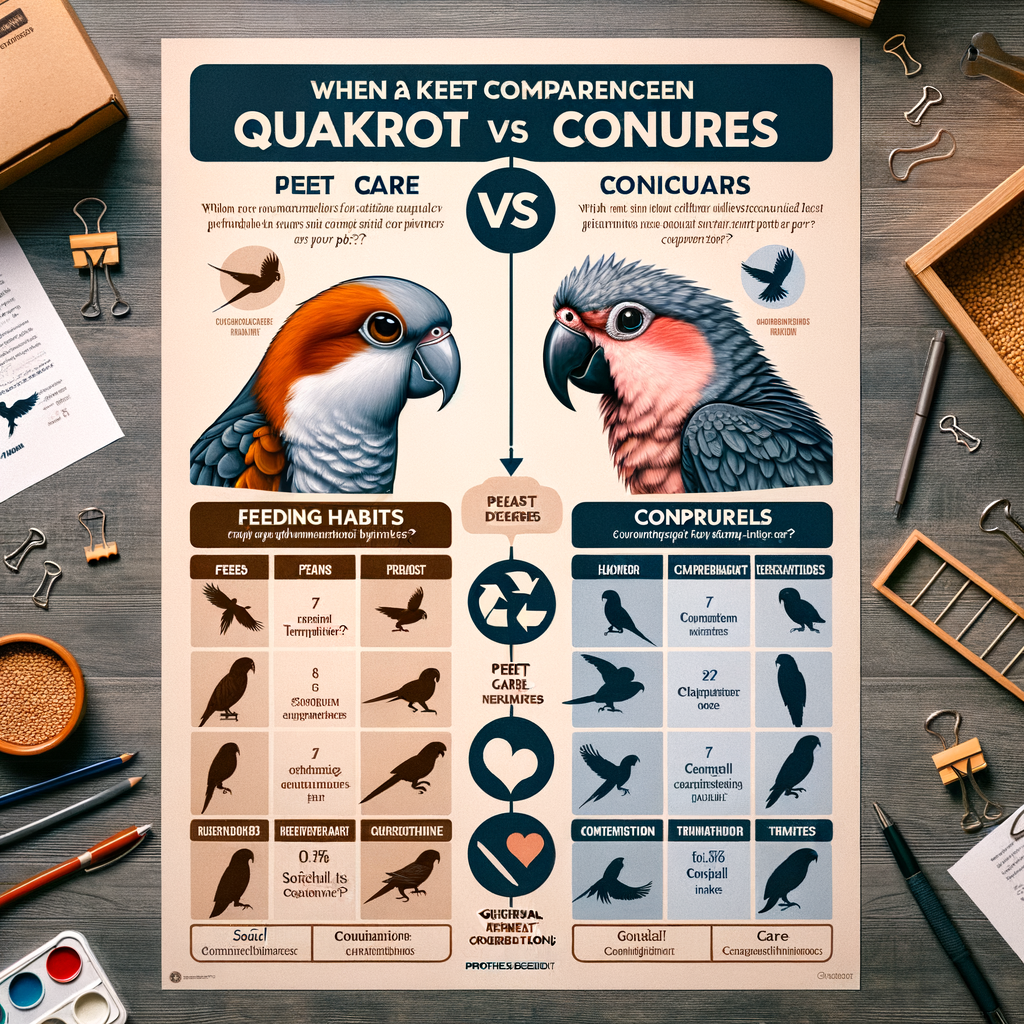
Introduction to Quaker Parrot and Conures as Pets
When it comes to choosing a pet bird, two popular options often come to mind: Quaker Parrots and Conures. Both of these bird species have unique traits that make them excellent companions. In this article, we will delve into the world of these fascinating creatures, providing an overview of what it’s like to have them as pets.
- Overview of Quaker Parrots as Pets
- Overview of Conures as Pets
Quaker Parrots, also known as Monk Parakeets, are small, bright green birds native to South America. They are known for their intelligence, playful nature, and ability to mimic human speech. Quaker Parrots are social creatures that thrive on interaction and can form strong bonds with their human caretakers.
As pets, Quaker Parrots require a balanced diet of seeds, fruits, and vegetables, along with plenty of mental and physical stimulation. They are relatively easy to train and can learn a variety of tricks, making them a fun and engaging pet for families.
Conures are a diverse group of medium-sized parrots that come in a variety of vibrant colors. They are native to Central and South America and are known for their lively, outgoing personalities. Conures are very social and enjoy spending time with their human families.
Conures require a diet of high-quality bird pellets, along with fresh fruits and vegetables. They are active birds that need plenty of exercise and mental stimulation. Conures can be a bit noisy at times, but their charming personalities and affectionate nature more than make up for it.
Whether you choose a Quaker Parrot or a Conure, both bird species can bring joy, companionship, and a touch of the exotic into your home. In the following sections, we will compare these two bird species in more detail, helping you decide which one might be the best fit for your lifestyle.
Comparing Quaker Parrot and Conures
When it comes to choosing a pet bird, it’s important to understand the differences between various species. In this section, we will compare the physical characteristics of Quaker Parrots and Conures, two popular pet bird choices.
Physical Characteristics
Physical characteristics are one of the most noticeable differences between Quaker Parrots and Conures. Let’s take a closer look at each of these birds.
- Quaker Parrot Physical Traits
- Conures Physical Traits
Quaker Parrots, also known as Monk Parakeets, are small to medium-sized birds. They typically measure around 11-12 inches in length and weigh between 90 to 120 grams. Quaker Parrots are known for their bright green body feathers, grey chest, and greenish-yellow abdomen. They also have a distinctive blue flight feather on their wings and tail. One of their most recognizable features is their “monk’s hood,” a grey area around their neck that looks like a hood.
Conures are also small to medium-sized birds, but they are often a bit larger than Quaker Parrots. They usually measure between 12-20 inches in length, depending on the species, and weigh between 100 to 250 grams. Conures have a more streamlined body shape and a long, pointed tail. They come in a wide variety of colors, from bright green to yellow, orange, and even blue. Their beaks are usually black or horn-colored, and they have white rings around their eyes.
Although both Quaker Parrots and Conures are small to medium-sized birds, their physical traits are quite distinct. These differences can help you decide which bird is the right fit for your home and lifestyle.
Behavior and Temperament
When choosing a pet bird, understanding their behavior and temperament is crucial. Let’s delve into the behavior and temperament of both Quaker Parrots and Conures.
-
Quaker Parrot Behavior
Quaker Parrots, also known as Monk Parakeets, are known for their lively and social nature. They are intelligent birds that love to play and interact with their human companions. Quaker Parrots are also known for their ability to mimic human speech, which can be a source of endless entertainment for their owners.
However, Quaker Parrots can also be quite territorial, especially around their cages. They may show aggressive behavior if they feel their space is being invaded. Therefore, it’s important to respect their boundaries and train them properly from a young age.
-
Conures Behavior
Conures, on the other hand, are also very social and playful birds. They are known for their friendly and affectionate nature. Conures love to be the center of attention and will often perform tricks to entertain their owners.
However, Conures can be quite loud and noisy, especially when they want attention. They also require a lot of mental stimulation to prevent boredom, which can lead to destructive behavior. Therefore, providing them with plenty of toys and interaction is crucial for their well-being.
In conclusion, both Quaker Parrots and Conures make wonderful pets, each with their unique behaviors and temperaments. It’s important to consider these factors and choose the bird that best fits your lifestyle and personality.
Lifespan and Health
-
Quaker Parrot Lifespan and Common Health Issues
The Quaker Parrot, also known as the Monk Parakeet, is a long-lived bird. With proper care, these birds can live up to 20-30 years in captivity. However, their long lifespan also means they are prone to certain health issues.
One common health issue in Quaker Parrots is obesity. This is often due to a diet high in fat and low in nutrients. Other health issues include feather plucking, which can be a sign of stress or boredom, and respiratory infections, which can be caused by poor air quality or exposure to drafts.
Regular vet check-ups can help catch these issues early and ensure your Quaker Parrot lives a long, healthy life.
-
Conures Lifespan and Common Health Issues
Conures are another type of parrot that can live a long time. On average, Conures live between 15-20 years in captivity. Like Quaker Parrots, they are also prone to certain health issues.
Conures can suffer from feather plucking and respiratory infections, much like Quaker Parrots. They are also prone to a condition called Conure Bleeding Syndrome, which can cause sudden, unexplained bleeding. This condition is often genetic, so it’s important to know the health history of any Conure you adopt.
Regular vet visits are crucial for Conures as well, to monitor their health and catch any potential issues early.
| Species | Average Lifespan | Common Health Issues |
|---|---|---|
| Quaker Parrot | 20-30 years | Obesity, Feather Plucking, Respiratory Infections |
| Conures | 15-20 years | Feather Plucking, Respiratory Infections, Conure Bleeding Syndrome |
Quaker Parrot vs Conures: Pet Care
When it comes to pet care, understanding the dietary needs of your feathered friends is crucial. In this section, we will delve into the diet and nutrition requirements of both Quaker Parrots and Conures.
Diet and Nutrition
Just like humans, birds need a balanced diet to stay healthy. The diet of Quaker Parrots and Conures varies slightly, and it’s essential to understand these differences to provide the best care for your pet.
- Quaker Parrot Diet Requirements
- Conures Diet Requirements
Quaker Parrots, also known as Monk Parakeets, are omnivores. This means they eat both plants and meat. Their diet should consist of a variety of fruits, vegetables, seeds, and nuts. Quaker Parrots particularly enjoy apples, bananas, and carrots. They also need a good amount of protein in their diet, which can be provided through boiled eggs or cooked chicken. It’s important to note that Quaker Parrots should not be fed avocados or chocolate as these foods can be toxic to them.
Conures, on the other hand, are primarily herbivores. Their diet should consist mostly of fruits, vegetables, and grains. They enjoy a variety of fruits such as apples, oranges, and berries. Vegetables like carrots, spinach, and sweet potatoes are also a good choice. Conures also need a small amount of protein, which can be provided through legumes or cooked eggs. Like Quaker Parrots, Conures should not be fed avocados or chocolate.
Remember, a balanced diet is key to keeping your pet bird healthy and happy. Always consult with a vet or a bird care expert if you have any doubts about what to feed your pet.
Housing and Environment
When it comes to keeping birds as pets, their housing and environment play a crucial role in their overall health and happiness. Let’s take a closer look at the specific housing needs of Quaker Parrots and Conures.
- Quaker Parrot Housing Needs
- Conures Housing Needs
Quaker Parrots, also known as Monk Parakeets, are active and intelligent birds. They require a spacious cage, ideally one that is at least 18 inches long, 18 inches wide, and 24 inches high. The cage should have horizontal bars to encourage climbing and exercise. Inside the cage, provide a variety of perches of different sizes and textures to keep their feet healthy. Quaker Parrots also appreciate toys and puzzles to keep their minds stimulated. It’s important to place the cage in a quiet, draft-free location, away from direct sunlight and kitchen fumes.
Conures are lively and playful birds that also need a roomy cage for their well-being. A cage with dimensions of 24 inches long, 24 inches wide, and 24 inches high is a good starting point. Like Quaker Parrots, Conures enjoy climbing, so a cage with horizontal bars is beneficial. Include a variety of perches and toys to promote physical activity and mental stimulation. Conures are sensitive to noise and temperature changes, so place their cage in a calm, stable environment. Avoid areas with direct sunlight, drafts, and kitchen fumes.
In conclusion, both Quaker Parrots and Conures need a spacious cage with plenty of opportunities for exercise and mental stimulation. Their housing should be placed in a quiet, stable environment for their comfort and safety. By meeting these housing needs, you can help ensure your feathered friend’s happiness and longevity.
Exercise and Enrichment
Just like humans, birds also need regular exercise and enrichment activities to stay healthy and happy. This is especially true for pet birds like Quaker Parrots and Conures. Let’s explore some of the activities that can keep these birds active and entertained.
-
Quaker Parrot Exercise and Enrichment Activities
Quaker Parrots, also known as Monk Parakeets, are known for their playful and energetic nature. They love to fly, climb, and explore their surroundings. Here are some activities that can help stimulate their mind and body:
- Flight Time: Allow your Quaker Parrot out of its cage for supervised flight time. This not only provides exercise but also allows them to explore their environment.
- Interactive Toys: Toys that require problem-solving can keep a Quaker Parrot mentally stimulated. Consider puzzles, foraging toys, or toys with hidden treats.
- Training: Quaker Parrots are intelligent and can learn tricks. Training sessions can be a fun way to interact and bond with your bird.
-
Conures Exercise and Enrichment Activities
Conures are active and sociable birds. They need a variety of physical and mental stimulation to keep them happy. Here are some suggestions:
- Free Flight: Like Quaker Parrots, Conures also benefit from supervised free flight time. This helps them stretch their wings and burn off energy.
- Chew Toys: Conures love to chew. Providing chew toys can help keep their beak healthy and prevent boredom.
- Social Interaction: Conures are social birds and enjoy interacting with their human family. Spend time talking, playing, or training your Conure to keep it engaged.
In conclusion, exercise and enrichment activities are crucial for the well-being of your pet bird, whether it’s a Quaker Parrot or a Conure. Remember, a happy bird is a healthy bird!
Choosing Between a Quaker Parrot and Conures
Choosing a pet bird is a significant decision that requires careful thought and consideration. Two popular options are the Quaker Parrot and Conures. Each bird has its unique characteristics and care requirements, making the choice between them a personal one based on your lifestyle, preferences, and bird care knowledge.
- Considerations when choosing a pet bird
- Case study: Choosing between a Quaker Parrot and Conures
When choosing a pet bird, there are several factors to consider. These include the bird’s lifespan, diet, social needs, noise level, and care requirements. It’s also important to consider your lifestyle and how much time you can dedicate to caring for your pet.
| Consideration | Quaker Parrot | Conures |
|---|---|---|
| Lifespan | 20-30 years | 15-25 years |
| Diet | Fruits, vegetables, grains | Fruits, vegetables, seeds |
| Social Needs | High | Moderate to High |
| Noise Level | Moderate | High |
| Care Requirements | Moderate to High | Moderate |
Let’s consider the case of Jane, a first-time bird owner. Jane lives in a small apartment and works from home, so she wanted a pet bird that was relatively quiet and easy to care for. After researching both Quaker Parrots and Conures, Jane decided on a Quaker Parrot. The Quaker Parrot’s moderate noise level and high social needs were a better fit for Jane’s lifestyle and living situation.
In conclusion, the decision between a Quaker Parrot and Conures depends on various factors, including the bird’s characteristics and your personal circumstances. By considering these factors carefully, you can make an informed decision that will result in a rewarding pet ownership experience.
Conclusion: Quaker Parrot vs Conures
In this article, we’ve taken a close look at the Quaker Parrot and Conures as pets. Both birds have their unique traits and characteristics that make them special. Let’s summarize the key takeaways.
- Key takeaways: Quaker Parrot as a pet
- Key takeaways: Conures as a pet
- Final thoughts on Quaker Parrot vs Conures
The Quaker Parrot is known for its intelligence and sociability. They are relatively easy to train and can learn a wide range of tricks. They also have the ability to mimic human speech, making them a fun and interactive pet. However, they require a lot of attention and mental stimulation to keep them happy and healthy. They are also known to be a bit noisy, which may not be suitable for all households.
Conures, on the other hand, are known for their vibrant colors and playful nature. They are also intelligent and can be trained to perform tricks. They are generally quieter than Quaker Parrots, but they still enjoy social interaction and require regular mental stimulation. Conures are also known for their longevity, with some species living up to 30 years.
Both Quaker Parrots and Conures make excellent pets, but the best choice depends on your personal preferences and lifestyle. If you enjoy a lively and interactive pet, a Quaker Parrot may be the right choice. If you prefer a quieter, but still playful and engaging pet, a Conure may be a better fit. Remember, owning a pet is a long-term commitment, so make sure to consider all factors before making a decision.
In conclusion, both Quaker Parrots and Conures have their unique charms and challenges. The key is to understand their needs and provide them with a loving and stimulating environment. Happy pet owning!
